The 1978 Saab 99 Turbo, a shining example of Scandinavian automotive excellence, has made a remarkable entry into the Bring-a-Trailer auction website. Within just 12 hours of being listed, this iconic vehicle has already garnered significant attention, with bids soaring to $36,500 and counting, accompanied by 19 enthusiastic bids (just for now).
This stunning car, which continues to draw eyes and raise expectations with six days still left in the auction, now finds its new beginning in the United States, after being lovingly acquired and imported by its current owner in 2020. This classic car (31k Kilometers (~19k Miles) Shown on the clock) is not just a testament to Saab’s innovative spirit and timeless design, but also a symbol of its enduring appeal and the high demand among collectors and enthusiasts alike
The 1978 Saab 99 Turbo stands as a testament to Scandinavian automotive design and engineering. Assembled by Saab-Valmet in Uusikaupunki, Finland, this particular model has traveled from Europe to the US, finding its new home in 2020. This classic car not only embodies the innovative spirit of Saab but also showcases the timeless appeal of its design and performance.
Table of Contents
- 1 Exterior Design and Features: A Study in Elegance and Functionality
- 2 Interior Comfort and Controls: A Cabin of Luxury and Practicality
- 3 Under the Hood: Power and Precision Engineering
- 4 Chassis and Handling: A Balanced Driving Experience
- 5 Ownership and Documentation: A Collector’s Dream
- 6 The Enduring Legacy of the Saab 99 Turbo
- 7 Reflecting on Past Saab Auctions: A Market Analysis
Exterior Design and Features: A Study in Elegance and Functionality
This Saab 99 Turbo‘s exterior, finished in a striking Cardinal Red Metallic, is a blend of style and aerodynamic functionality. It features both front and rear spoilers, a unique front cowl scoop, headlight wipers, and Turbo badging that underscores its performance pedigree.
The car’s allure is further enhanced by its Ronal 15″ Inca alloy wheels, shod in Vredestein Sprint Classic tires, and distinctive mud flaps and pop-out rear windows. Notably, a Saab Sport & Rally decal adorns the rear spoiler, adding a touch of racing heritage.
Interior Comfort and Controls: A Cabin of Luxury and Practicality
Inside, the 99 Turbo offers a rich red upholstery, with contrasting accents and seatbacks, complemented by color-coordinated door panels and carpeting. The dashboard, adorned with woodgrain trim, houses a heater, a locking glove compartment, and gray Saab 99-branded all-weather floor mats. The driver is greeted with a three-spoke steering wheel, a 200-km/h speedometer, a tachometer, and essential gauges, including a stock VDO turbo boost gauge, strategically placed for optimal visibility.
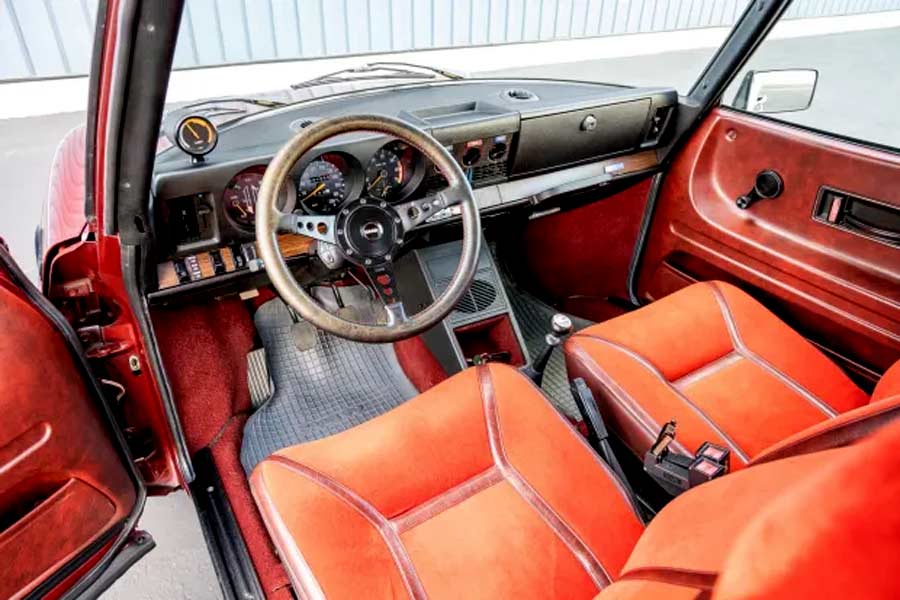
Under the Hood: Power and Precision Engineering
At the heart of this Saab lies a turbocharged 2.0-liter inline-four engine, meticulously rebuilt by Atecar Classics in Belgium. The comprehensive restoration included reconditioning the cylinder head, boring the cylinder block, and replacing critical components like the water pump and pistons. Recent services include an oil change, timing adjustments, turbo waste gate mechanism repair, and more, ensuring the car’s performance matches its looks.
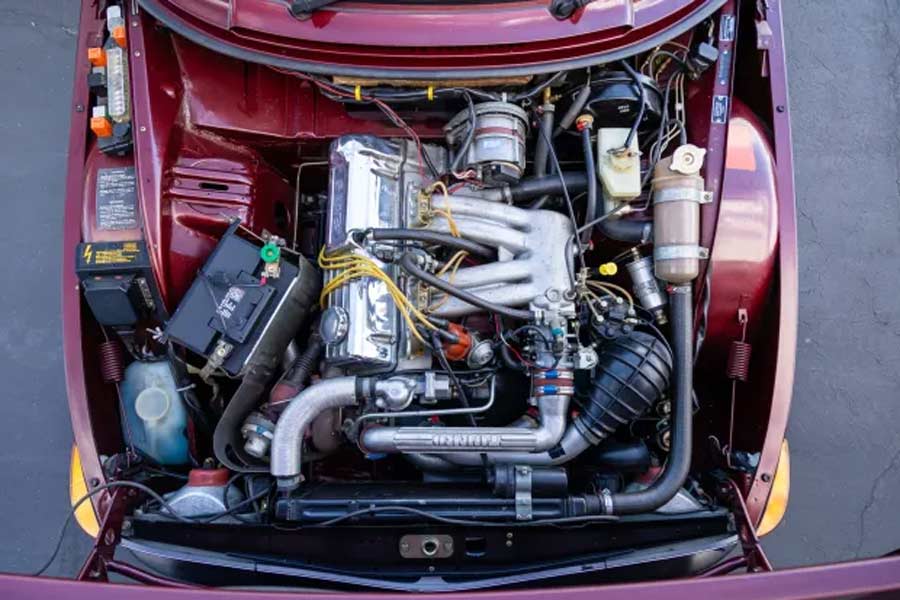
Chassis and Handling: A Balanced Driving Experience
The Saab 99 Turbo delivers a responsive driving experience, thanks to its power-assisted four-wheel disc brakes and well-tuned suspension. The manual transaxle offers engaging driving dynamics, and recent replacements of the clutch, throwout bearing, and other components ensure reliable operation.
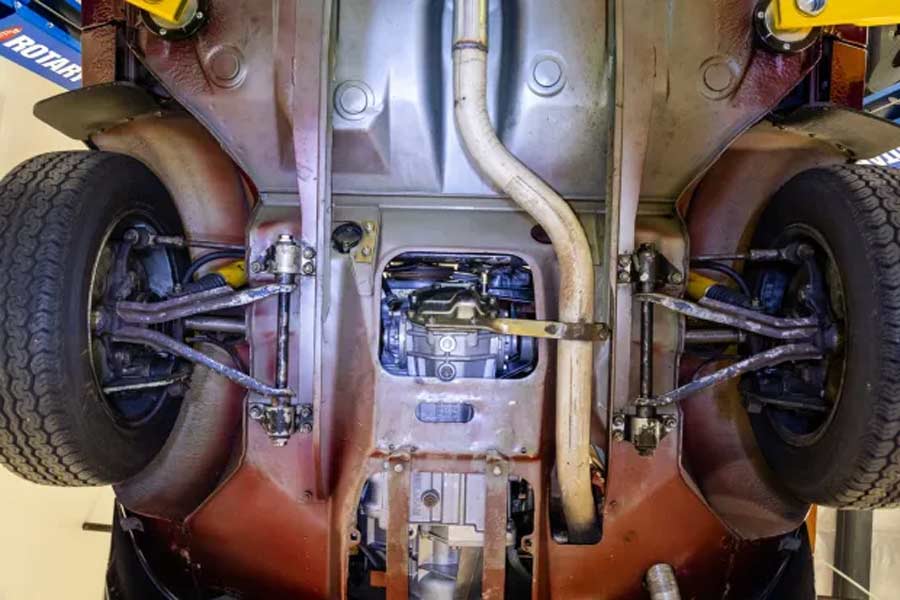
Ownership and Documentation: A Collector’s Dream
Offered in California, this vehicle comes with a clean New Hampshire title, labeled as an “antique vehicle.” It includes manufacturer’s literature, a tool kit, and recent service records, making it not just a piece of automotive history, but a well-documented one at that.
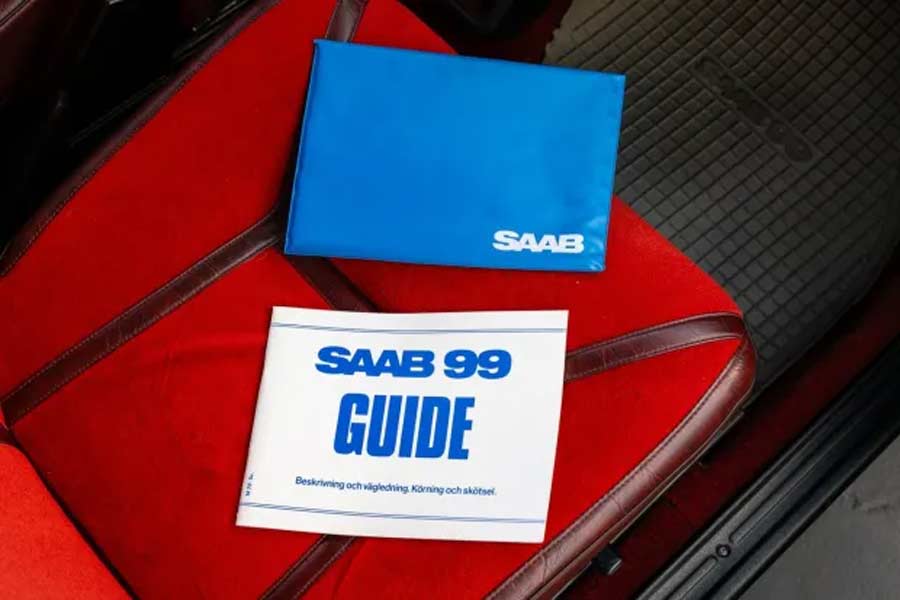
The Enduring Legacy of the Saab 99 Turbo
This 1978 Saab 99 Turbo is more than just a car; it’s a piece of automotive history, representing a pivotal moment in Saab’s legacy. With its blend of style, performance, and history, this car is not just an appealing purchase for collectors but also a vibrant symbol of the enduring appeal of classic European cars in the American automotive landscape.
Reflecting on Past Saab Auctions: A Market Analysis
Recalling Past Saab Successes in Auctions
In our previous discussions, we’ve highlighted several notable Saab auctions that reflect the brand’s growing appeal in the collector’s market. One prominent example was a 1990 Saab 900 Turbo ($57,000), which commanded a high price due to its exceptional condition and low mileage. This auction demonstrated the market’s appreciation for Saab models that epitomize the brand’s innovative turbo technology and distinct design.

Another significant case was the sale of a 1995 Saab 9000 Aero ($30,000). Despite its relatively newer model year, it attracted considerable attention due to its rarity and the cult following of the 9000 series. The car’s advanced features for its time, including a turbocharged engine and a spacious, luxurious interior, played a key role in its high auction value.
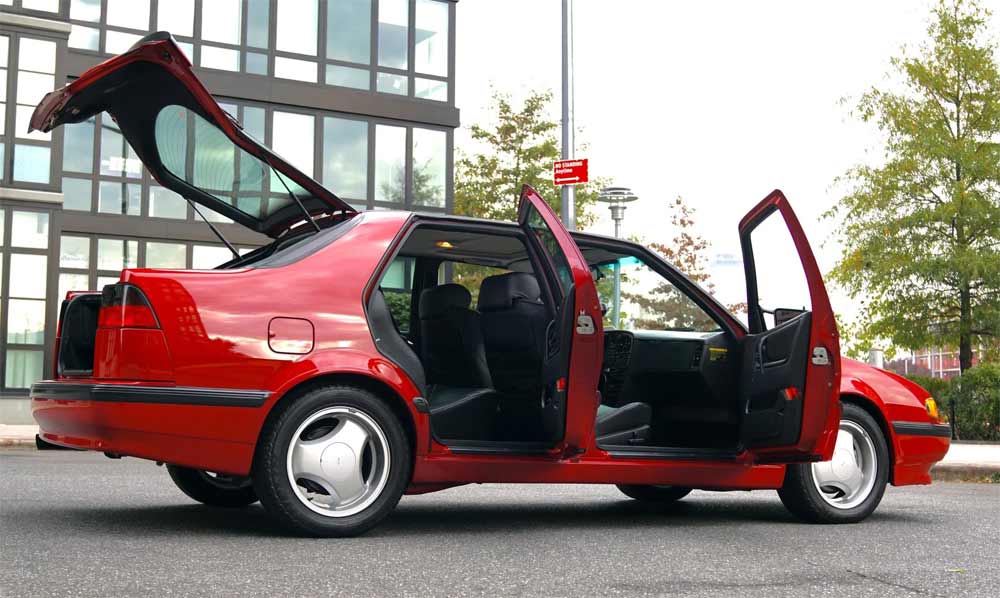
Market Trends and the Influence of Rarity and Condition
These cases underline two critical factors influencing the market value of classic Saabs: rarity and condition. Limited production models, like certain years of the 900 Turbo or the 9000 Aero, are particularly sought after. Additionally, vehicles in pristine condition, with low mileage and well-documented maintenance histories, tend to fetch higher prices.
Predicting Future Values Based on Past Auctions
Drawing from these examples, it’s clear that classic Saabs are not just holding their value but are, in fact, appreciating. The trend suggests a bright future for well-preserved models of Saabs, especially those from the 1980s and 1990s, which are now entering the realm of classic cars. As these vehicles become rarer and the nostalgia factor increases, their value is expected to continue rising.










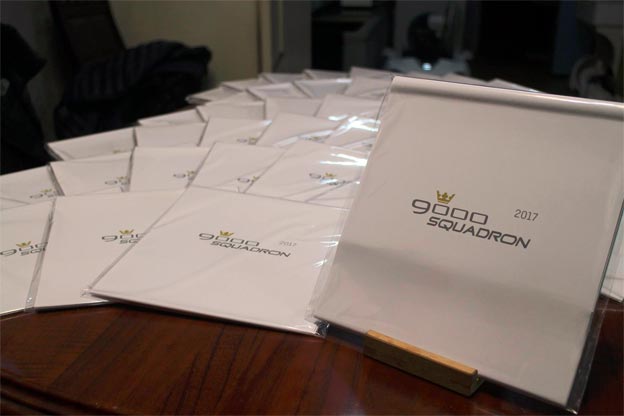
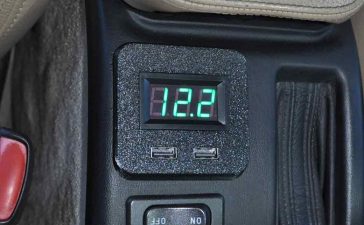
Scandinavian Icon ???? No, it is pure and only Swedish.
I have worked on many older Saabs especially the turbo version.
I drove 60 miles round-trip to law school each day, awesome car!
In my eyes it looks better than its sucessor SAAB 900. The difference is the frontend only
99 is a small car, compare to moderns
I had a ’78 3-door in black – wish I hadn’t sold it but it needed a lot of bodywork. It’s in good hands now, has been restored & is in very good condition.
I was working at a Saab dealership in the UK and drove one the first 99 turbo’s and what a fantastic car that was. No power steering, fat tires, a rev counter screwed into the window pillar. So basic but faaaast! My first 130 mph drive down the M 1 from Nottingham to Leicester. Those were the days my friends. I now can still do the 130 but in kms☹️
TO Jon Kestle > ….ya but now it is in a Porshe!!!
I’m now having to get the windows extra tinted so that people don’t see the old fella driving.that was a real car of the day and today would not be so good( no power steering!)
Many thanks for keeping me ‘inflated’ and well balanced . I guess I need that now. And I tried one of those Danish goodies =. Very yummy🤪thanks Bob.